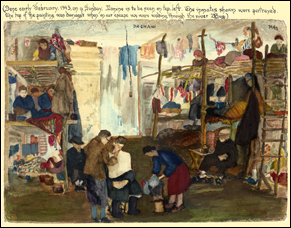Displacement and Identity: Arnold Daghani
The following essay is part of a series devoted to contemporary art and architecture East-Central Europe. It was first delivered as a paper at a conference held at MIT in October, 2001.
What was the experience of an aspiring Modernist artist in Romania in the late 1940s and 1950s? Arnold Daghani (1909-1985) may be a case in point.(This paper represents early research for a project now funded by the Leverhulme Trust, to run from 2001-4 at the University of Sussex, where a large collection of around 6,000 artworks and other documentation by Daghani is held in the Arnold









